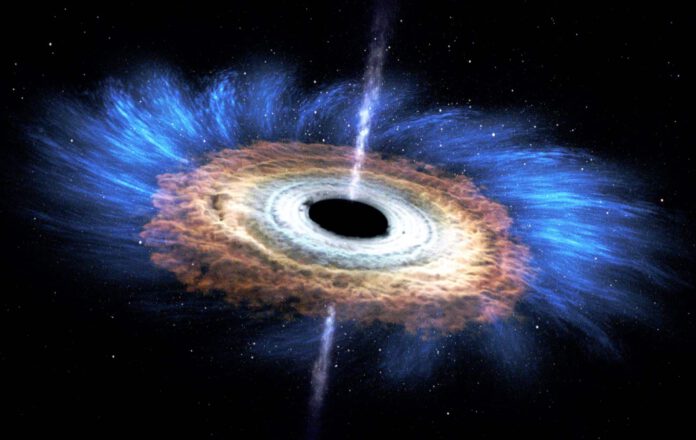
Ever-Present Hungry Black Holes
Scientists have discovered a ubiquitous presence of 18 black holes that are in the process of devouring a star. This discovery has effectively doubled the number of detections of such ‘tidal disruptions’.
The discoveries have been recorded in The Astrophysical Journal. During their study, scientists searched for Tidal Disruption Events, scenarios wherein a star gets so close to a black hole that it is torn apart and swallowed by the black hole.
In the past, researchers have identified several tidal disruptions in the nearby universe by looking for bursts of X-ray radiation and visible light, which can be associated with such events. In this new study, however, researchers shifted their approach, focusing instead on detecting infrared radiation.
Piercing the Unseen
Scientists had high expectations that this approach would lead to the detection of previously undetected tidal disruptions. This is due to the fact that infrared radiation is primarily released within ‘dusty’ galaxies, where the central black hole is surrounded by dust and galactic debris. When such a black hole devours a star, it releases visible light and X-rays, but the surrounding dust blocks this radiation, making it undetectable and the feeding black hole hidden. The researchers then reasoned that the tidal disruption would cause the surrounding dust to heat up and generate detectable infrared radiation. This change, they supposed, could be an indication of a tidal destruct event occurring within a galaxy.
In their quest for infrared light outbursts, the researchers turned to data collected by NASA’s Wide-field Infrared Survey Explorer (WISE), which led to the discovery of 18 tidal disruptions. “Most of these cannot be seen in visible light,” says researcher Megan Masterson.
Across Various Galaxies
The 18 feeding black holes are found across a broad range of galaxies. This is interesting since up until now, tidal disruptions were primarily observed in a single type of galaxy: the so-called post-starburst galaxies. These are galaxies where new stars are barely formed. Such galaxies are relatively rare, and astronomers wondered why tidal disruptions would mainly occur in these rarer galaxies. They did, however, realize that these galaxies are quite dust-free, making it comparably easier to detect light and X-rays that could unveil feeding black holes. This may also explain why feeding black holes are primarily found in these types of galaxies. The new research now reveals that this assumption has been correct.
Since specifically looking for the infrared signal that feeding black holes can emit in dusty galaxies, tidal disruptions have suddenly been found in a much wider range of galaxies.
Based on the larger number of tidal disruptions now observed, scientists believe they can estimate more accurately how often a black hole feeds. They guess that a galaxy experiences a tidal disruption roughly every 50,000 years. And this lines up closely with what theorists had previously predicted.











